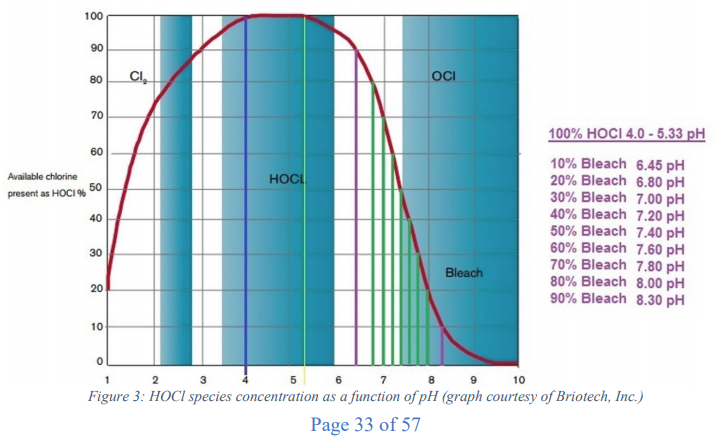
Ref.Source: WHO
HOCl has emerged in the current pandemic as the most potent and environmentally safe disinfectant available and with a wide range of efficacy against many human pathogens, including the SARS-CoV-2 coronavirus. 8,36,37
In recent years compelling evidence of the potency of pure, stable preparations of HOCl in the inactivation of even the most resistant infectious agents, such as BSE Prions(52), and HPV16 viruses78,79 (both of which are completely unaffected by
disinfectants currently on the EML list) has made it clear that HOCl deserves a place in every public health program as a fundamental instrument of infectious disease control.117
In this field of Antisepsis (15.2) and Wound Infection Control (13), HOCl offers an unequaled combination of: 1) antimicrobial efficacy against all the common bacteria and yeasts/fungi that infect wounds68, along with; 2) a convincing record of enhancing the rate of healing to reduce the high burden of wound care costs.105 Both acute and intractable chronic wound infections, often treated with high value antibiotics in ways that inevitably contribute to multi-drug resistance traits, put great strains on healthcare delivery. HOCl can help ease that burden.9,10,76,89
The availability of HOCl to provide both effective infection control and improved rates of healing97 with a proven reduction in wound biofilms, 102 will seriously reduce the costs of wound management. This can benefit national health systems globally, but particularly in the developing nations of the world. Tolerant of temperature extremes, and stable when packaged for up to several years, 96 pure HOCl is ideally suited to tropical region primary healthcare needs. Since the
end products of its use are water and salt, the compound poses no personal or ecotoxicological hazards either in handling or routine deployment as a disinfectant, antiseptic or wound decontaminant.61,128
3. Supporting Organizations and Individual
Hypochlorous acid (HOCl) for the purposes proposed in this application (EML Sections 15.1, 15.2 and 13) has been evaluated by regulatory agencies, healthcare institutions, professional organizations, independent laboratories, and academic institutions in more than 50 countries.
More than 2600 publications in peer-reviewed scientific journals address the extraordinary potency and safety of HOCl as an antimicrobial agent in the fields of environmental disinfection and antisepsis. A further 3000 journal articles report on the benefits HOCl provides to wound healing enhancement when applied topically, and the biochemical and physiological mechanisms involved in those processes. Representative examples of the published literature supporting these uses and benefits are included in the list of References that start on page 42.
HOCl solutions are already included in the WHO list of coronavirus-effective biocides, and in the US EPA ‘N’ list of disinfecting agents able to control emerging pathogens like SARS-CoV-2. 37,126
More than ten branded aqueous HOCl formulations have been cleared by the US FDA for topical use in wound management over the last decade. A Class III medical product approval for HOCl has been granted in the EU, and the Japanese Ministry of Health has approved use of HOCl for topical medical applications. The US FDA has approved HOCl for high level disinfection and sterilization of medical instruments, including those for use at critical (i.e., sterile) sites.
A number of consensus and guidance statements have been issued in recent years by governmental agencies responsible for healthcare product regulatory oversight, and by professional specialty organizations focused on advantageous technical innovations that better serve their members’ needs.24,55
Here is a sample:
* From the WHO Interim Guidance Document on
“Cleaning and disinfection of environmental surfaces in the context of COVID-19”, page 2:
“The use of chlorine-based products: Hypochlorite-based products include liquid (sodium hypochlorite), solid or powdered (calcium hypochlorite) formulations. These formulations dissolve in water to create a dilute aqueous chlorine solution in which undissociated hypochlorous acid (HOCl) is active as the antimicrobial compound.” 126
* From the US FDA Analysis and Evaluation of Preventive Control Measures for the Control and Reduction/Elimination of Microbial Hazards, Chapter 5:
“Hypochlorous acid (HOCl) is the form of free available chlorine that has the highest
bactericidal activity against a broad range of microorganisms.”39
* The Japanese National Institute of Technology and Evaluation determined that hypochlorous acid is effective at inactivating SARS-CoV-2 at virucidal levels:
“Based on these results, the Committee judged that HAW (hypochlorous acid water) of an ACC (active chlorine concentration) of 35 ppm or higher was effective, which showed a more than 99.9% reduction of viral titer in the evaluation study at NIID (the National Institute for Infectious Diseases) as well as a more than 99.99% reduction in the studies at OUAVM and QTEC (universities).”55
Antisepsis
Antimicrobial efficacy results for HOCl tested by the Cantacuzino Institute in Romania (Table 2) and the Functional Water Association of Japan (Tables 3 and 4) reinforce the scope and speed of microbial inactivation. They also emphasize the exceptionally high level of performance of HOCl against Staphylococcus aureus and Pseudomonas aeruginosa, both regularly implicated in both acute and chronic wound infections.




Unstable HOCl may causing Eye and Skin inflammation because of being bleach than HOCl.
Poorly controlled manufacturing processes. Similar problems may arise when modern HOCl formulations are deliberately pH-adjusted into the neutral or higher zone.
(Note: KLEOMax using membrane technology that separate CL2 and OCl (breach), Operating on Mode-2 delivers the proper pH balanced with pH 5.5-6.5)
Eye and skin inflammation and respiratory irritation are common with hypochlorite (bleach), which can be present at levels of 30% or more in “HOCl” solutions made or adjusted to pH 7, or in swimming pools that are improperly managed, allowing pH to rise into the alkaline
range. (See figure 3 below).

Animal & Pet Safe

Highly Protection
